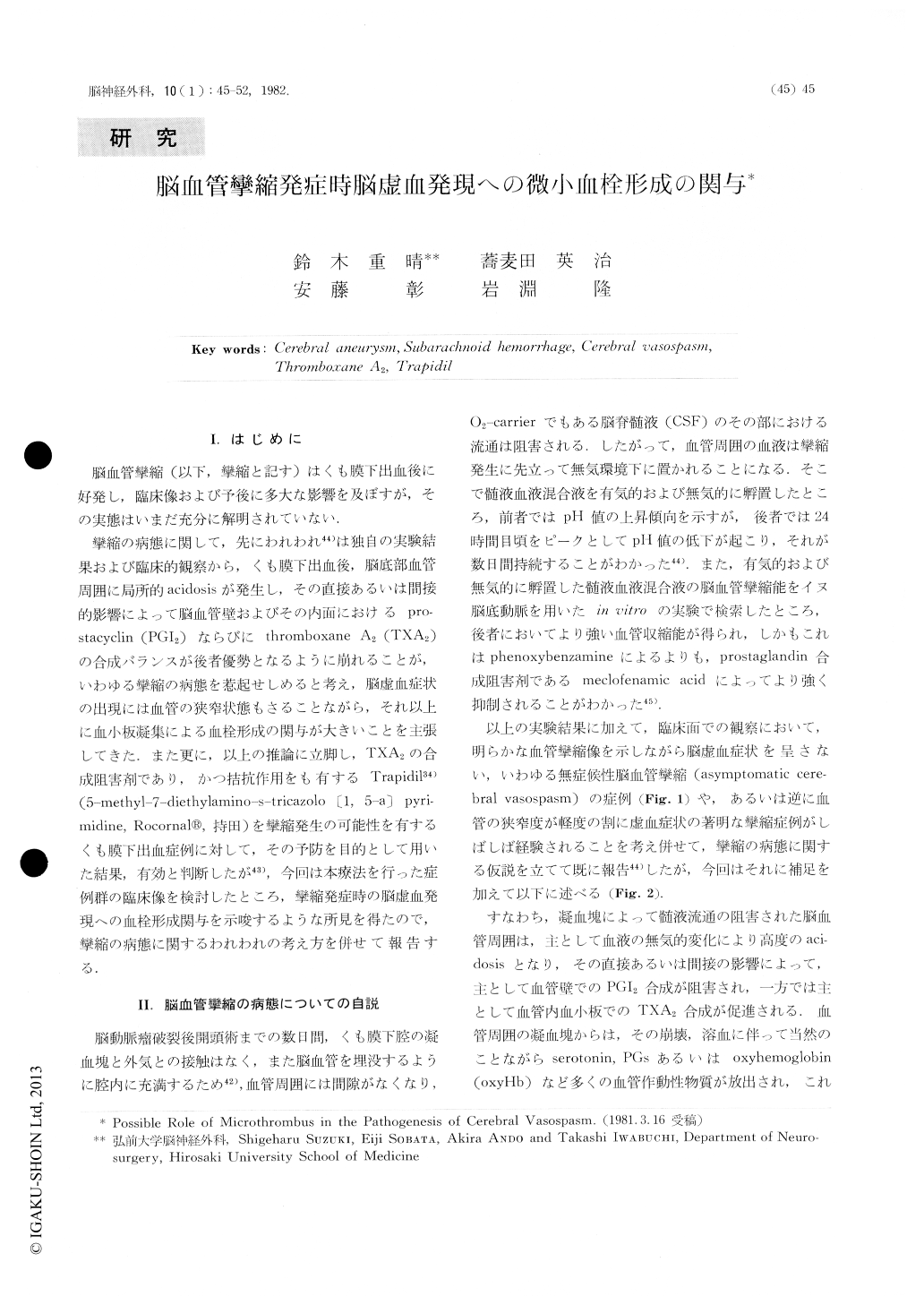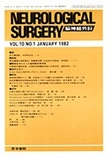Japanese
English
- 有料閲覧
- Abstract 文献概要
- 1ページ目 Look Inside
I.はじめに
脳血管攣縮(以下,攣縮と記す)はくも膜下出血後に好発し,臨床像および予後に多大な影響を及ぼすが,その実態はいまだ充分に解明されていない.
攣縮の病態に関して,先にわれわれ44)は独自の実験結果および臨床的観察から,くも膜下出血後,脳底部血管周囲に局所的acidosisが発生し,その直接あるいは間接的影響によって脳血管壁およびその内面におけるpro-stacyclin(PGI2)ならびにthromboxane A2(TXA2)の合成バランスが後者優勢となるように崩れることが,いわゆる攣縮の病態を惹起せしめると考え,脳虚血症状の出現には血管の狭窄状態もさることながら,それ以上に血小板凝集による血栓形成の関与が大きいことを主張してきた.また更に,以上の推論に立脚し,TXA2の合成阻害剤であり,かつ拮抗作用をも有するTrapidil34)(5-methyl-7-diethylamino-S-tricazolo〔1,5-a〕pyri-midhle,Rocornal®,持田)を攣縮発生の可能性を有するくも膜下出血症例に対して,その予防を目的として用いた結果,有効と判断したが43),今回は本療法を行った症例群の臨床像を検討したところ,攣縮発症時の脳虚血発現への血栓形成関与を示唆するような所見を得たので,攣縮の病態に関するわれわれの考え方を併せて報告する.
Our previous experimental and clinical studiesyieldedthe following results: CSF flow around thesubarachnoidvessels is often interrupted by subarachnoid clots;anaero-bical incubation of CSF-blood mixture led to a marked fallin the pH value; the vasocontractility ofanaerobicallyincubated CSF-blood mixtures was greater than that ofaerobically incubated samples; vasocontractioninduced byanaerobically incubated samples was inhibited to afargreater extent the prostaglandin synthesis inhibitormeclo-fenamic acid than by phenoxybenzamine;

Copyright © 1982, Igaku-Shoin Ltd. All rights reserved.


